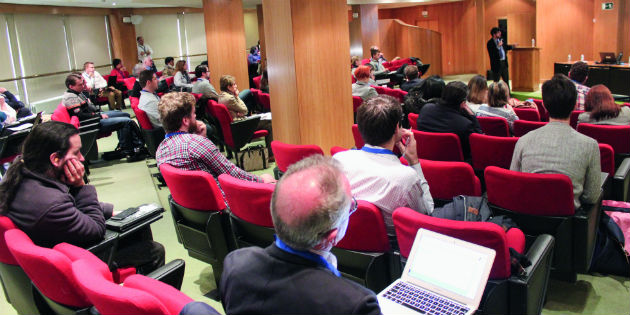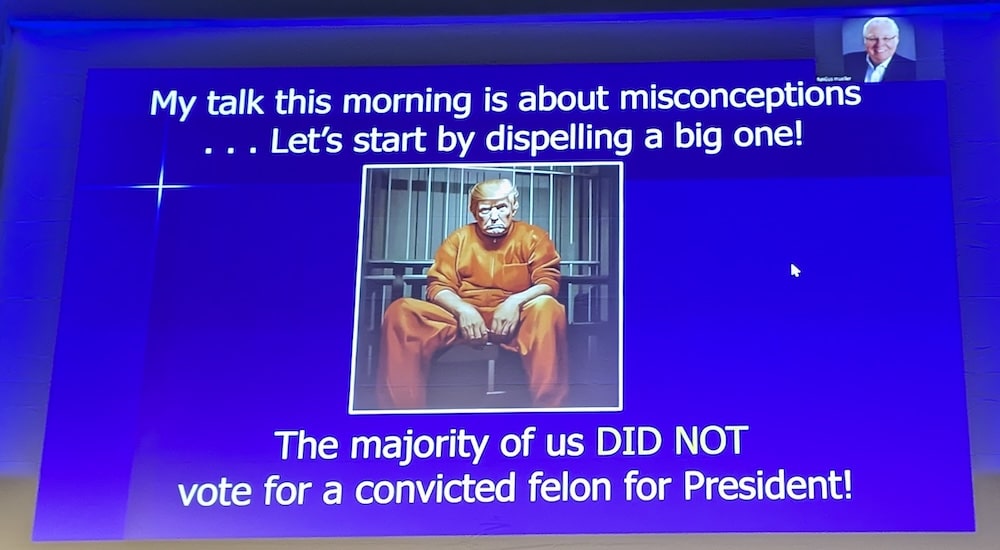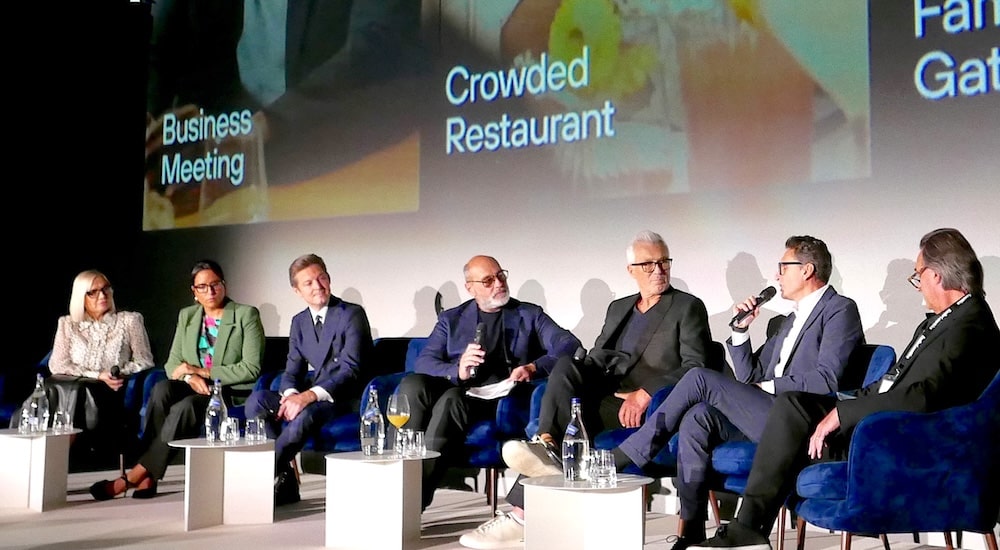An X-ray picture of tinnitus treatment in Europe
TINNET
Researchers from TINNET, the International Tinnitus Network, shared the results of their complementary work on this disorder at a conference held on march 31 at Madrid's Complutense University.

Among fields explored in different countries by the group’s members were measurement techniques for evaluating tinnitus, genotype studies, cerebral factors, and chiropractic treatment. Results included several studies involving patients, a database, and a survey amongst professionals of tinnitus in 24 European countries with special factors distinguishing three zones – North, South, and East – which revealed frequent use of TRI (Tinnitus Retraining Therapy) and other sound-based therapies, as well as general lack of treatment for what has been a long-endured pathology in many countries.
The latest European TINNET Conference 2017was held in Madrid, coordinated by SpaniardsIsabel Diges, director of the Acure Clinic (Madrid)for tinnitus and hyperacusis, and José AntonioLópez-Escámez, head of the Otology and OtoneurologyResearch Group at the ENT unit, San Cecilio Hospital, Granada.These periodic meetings bring together scientific teams fromdifferent countries so they can update each other on advancesin their different investigations, thus contributing to coordinatedprogress without overlapping or repeating work, and to acomplementary approach, explained Isabel Diges, the Spanishrepresentative at this European-funded programme.
This multiple focus, which began some years ago, providesan x-ray picture of the current treatment situation in tinnitusacross the continent. Among the results presented werethose of a voluntary survey that received 625 answers fromprofessionals in 24 countries from January to October, 2015.It shows, among other things, that of the first two treatmentoptions for patients with this complaint, the most frequent aresound therapies and TRT, these appearing as the first choicein studies of all three zones, along with drug treatments inthe east. As a second option, professionals choose the sametreatments in reverse order, i.e. the more frequent treatmentbeing the one not used as a first option, with the use ofassessment being incorporated in the north of Europe.This internet survey was presented by Dimitris Kikidisfrom Athens, Greece, and it required a second round ofconsultations after the scarce response obtained initiallyin Spain, Italy, France, and Israel. In total, 264 answerswere registered which ticked treatment with drugs, 56%;244 ticked assessment, 52% of the total; another 233indicated sound therapies with hearing aids and soundgenerators, 49%; 162 ticked relaxation techniques, 34%;134 psychotherapy, 26.6%; 128 TRT, 27%; 77 cognitivebehavioural therapy, 16%; and finally other techniques,amounting to less than 10% of answers, such as alternativetherapies or TMS (transcranial magnetic stimulation).
Lack of knowledge and cover
Another relevant datum concerning the treatment cover fortinnitus sufferers reveals that there is still a long way to go; 58% of all answers to the question of whether tinnitus clinicsexist in the respondent’s country were affirmative, therefore42% answered in the negative. This is nuanced by the greatvariability between countries and different answers withineach state. In this respect, while 100% answered ‘yes’ inBelgium and Germany, in the Czech Republic the percentagewas half that (50%), and 60% of respondents in Greececlaimed there were no professional clinics. Also evident fromthe surveys were the shortage of organised networks, medicalapproaches and protocols, as well as communication errors.And even in countries where there is awareness of tinnitus,more than 10% of respondents answered that no suchservice exists, as in Holland and Poland, for example, thusgiving an idea of the lack of awareness that exists amongstprofessionals. The study also reflects “deviations fromrecommendations”: guidelines do not exist or are not followed;standardised procedures are lacking; there is a shortage oftinnitus clinics and multidisciplinary teams; treatments provento be inefficacious are still being used, while those that areeffective are not used; results from validated measurementsare not adapted globally. With regard to time devoted to eachvisit, professionals in the north of Europe mostly declaredbetween 30 minutes and one hour (41%), while less timeis given in the south and east, respectively 43% with 56%admitting to winding up visits in 15 to 30 minutes.
Genetics and brain activity
One of the organisers of the Spanish gathering, José AntonioLópez-Escamez, explained strategies applied to patientselection and genomic studies, with the conclusion that aselection of individuals based on a specific phenotype willprovide the identification of genes involved in resilience(adaptation) to tinnitus and susceptibility to it. Anotherconclusion is that a fresh taxonomy (classification) of tinnitusdisturbances needs to include clinical and genetic information,and also that better understanding of the pathways involvedwill benefit the development of new treatments, amongother things.
Meanwhile, Dutch specialist Emile de Kleine (Groningen)focused on the relation between tinnitus and activity in theauditory cortex, which does not only involve the centralauditory system but also the limbic system and, possibly, the frontal lobe and cerebellum. He pointed out strongerfluctuations in the brain as a whole, and highlighted reducedfunctional connections within the central auditory system.Following in this field of research, Peyman Adjamian(Nottingham, UK), referred to the cerebral networks of tinnitus,underlining that—as published by Vanneste and De Ridder in2012—magnetoencephalography (MEG) used as a sourceof localisation allows for study of how its oscillations relate tochanges produced in some areas of the auditory cortex, thedorsal anterior cingulate and posterior cingulate cortices, thedorsolateral prefrontal cortex, regions of the frontal cortex,and the parahippocampus. Brain function (perception andcognition) depends on integrated activity between differentareas and it is reasonable to assume that a large networkof cerebral areas is involved in tinnitus interactions. Forexample, the interaction between auditory and non-auditoryareas processing emotion and attention. How does the brainintegrate information in order to form a coherent perception?The neurons that oscillate together work together and connectin this way. To sum up, Adjamian explained how MEG andelectroencephalography (EEG) reveal aspects of tinnitus,measuring different features of the same neural phenomenaand, among other conclusions, he pointed out that: variableeffects result in the individual’s attention—sometimesuncontrollable—and that “comorbid” conditions can bepresent or absent, essentially hyperacusis; age is an influence,as well as the degree of hearing loss; and that connectivitymethods are used to carry out statistical assessments of thefunctional relations between the temporal dynamics of signals.Furthermore, given the apparent heterogeneity of tinnitussounds, care must be taken with subtypes of conditions that have important and necessary results. In fact, thereare discrepancies in the literature published on these testsfor tinnitus.

International database
German specialists Berthold Langguth and MichaelLandgrebe, from Regensburg, talked about the internationaldatabase they are building, as well as its legal fundaments,while Deborah Hall, from Nottingham, UK, described a studycarried out on a sample of 1,344 patients aged from 16 to 88,in which multiple variables were evaluated.In close relation, she delved deep into the question of theneed to measure and into how to measure, drawing on herexperience in 228 clinical tests on adult tinnitus sufferers.Delegates showed interest in 35 domains of primary resultsand 60 among secondary results, while seven categories ofaspects were put forward for analysis: perception of tinnitus,impact, associated complaints, quality of life, structures andfunctions of the organism, results related to treatment, and“unclear or miscellaneous”.
Professionals were asked for their thoughts on each one ofthe 66 different tinnitus domains: “Is it of critical importanceto decide whether a treatment has had effects? Wasanything missing?
Meanwhile, Lisbon’s Alain Londero and Haula Haideradvocated the establishment of “minimum” and standardmeasurement protocols for the community of professionalsdealing with this health problem.
The gathering also saw discussion of quiropractic therapiescarried out in Milan, Italy, through manual stimulation of thevertebral column, specifically between the first and secondcervical vertebrae, as a means of relaxation and to correctlymodify posture and tone-up neck muscles. This was repeatedover three months, and Luca del Bo’s team observed a “strongreduction” in the disabling effects of tinnitus, with reductionsin four out of five patients. These “preliminary” results suggesta causal relationship between quiropractic treatment andtinnitus, which this group hypothetically attributes to betterblood flow to the cochlea, as well as effects on neural activityand the efferent system.
Tinnitus hub on Internet
The UK’s Steve Harrisonpresented the so-calledinternet site Tinnitus Hub,a non-profit initiative started in 2015 with the idea of linkingup patients to researchers. It now boasts 200,000 uniquevisitors per month and 2.3m in the last 12 months, with halfthis traffic registered in the US, followed a long way behind bythe UK (15%) and, with percentages under 10%, in this order,Canada, Australia, India, Holland, Germany, Ireland, France,and Sweden. The scheme’s commitment to “impartiality” ispatent, since it seeks no advertising.
A survey run by this channel last year obtained5,017 answers, and had the cooperation of the TinnitusResearch Initiative (TRI) and participation from the Universityof Magdeburg (Germany) in processing its data. It is set up topredict what patients will want to discuss about their tinnitus(the condition itself, treatment, evolution, recommendations).Goals in sight for the next 12 months include, among others,a small selection of “high-value”projects, collaborationwith researchers so that they can have greater impact,involving patients in tests, and an internet audio site so thata sound profile can be established, one that is wider than thetraditional four-octave profile, differentiating between right andleft ear, with notice of a regular test and with tone and soundlined up to enable comprehension of tinnitus.
Another front emerging from “Tinnitus Hub” is the study ofphysical factors linked to the complaint which Sarah Michiels,from the University of Antwerp, Belgium, estimates asbetween 38% and 60% of cases, due to lesions, stiffening,ear blockage or jaw tension, among other things.Efforts are also being made to integrate research tools(such as TCHQ, TFI, and THS), and a support forum hasbeen created as a self-help “don’t panic guide” for patients.On the benefits of “Tinnitus Hub” as a stream of collectiveinformation, Harrison highlighted its rapid accessibility for avery extensive group of people and to different populations,the volume of individual cases, and understanding of patientsonline. Among its disadvantages, he pointed to the fact that itonly reaches patients with access tocommunications technology, so over-65s are not currently well-represented.There is also the predominance ofthose who are suffering from tinnituseffects, as opposed to those who havemanaged to diminish effects, whilethere is “relative difficulty” in providing longitudinal data, i.e.from a long-term and continuous angle.
According to Harrison, the greatest foreseeable impactis noticeable in patients’ sense of involvement, and theimprovement in speed and quality of information contributedby researchers worldwide.
The event also enjoyed the participation of Spanish expertsFrancisco Carricondo and Bárbara Romero, who offereda vision based on the research of Ramón y Cajal from theNeurobiology perspective, and Christopher Cederroth, fromStockholm, Sweden, who highlighted the genetic susceptibilityof suffering bilateral tinnitusChristopher Cederroth, fromStockholm, Sweden, who highlighted the genetic susceptibilityof suffering bilateral tinnitus in a sample of patients fromhis country.
European survey fact sheet
Number of persons surveyed by country:Lithuania (85), Portugal (82), Czech Republic (67),Spain (58), Belgium (53), Italy (48), Holland (40),France (37), Greece (28), Germany (26), Sweden (23),Denmark (14), UK (12), Israel (11), Malta (8), andSerbia (7).
By professional specialty:ENT (56%), audiologists (21%), neurologists (5%),psychiatrists (5%), psychologists (2.5%), andresearchers (1.5%). The authors stress that despitethe survey considering tinnitus as a problem ofthe central system, the majority of respondentswere ENT.
By medical centre or establishment whererespondent works:Surgery or private hospital (26%), state hospital(29%), state or private (18%), university (14%),and hearing care centre (4.5%). This is nuancedby universities being over-represented, theaudiologist/hearing care professional categorybeing unclear since there is no common framework,and by those working in the private sector who arepaid by the state system.
 Sign in
Sign in

